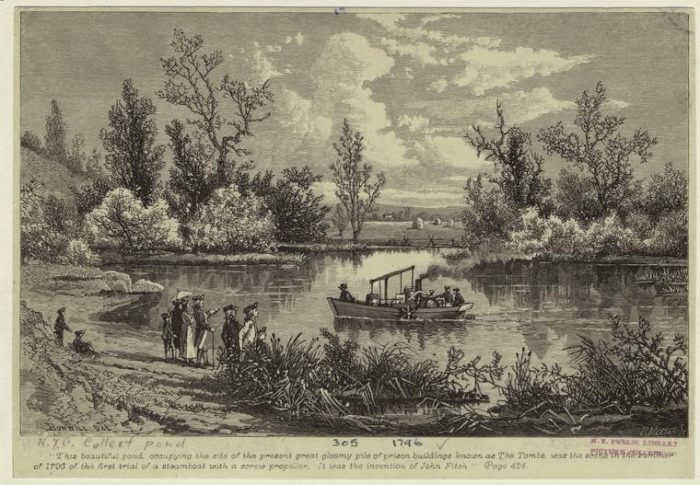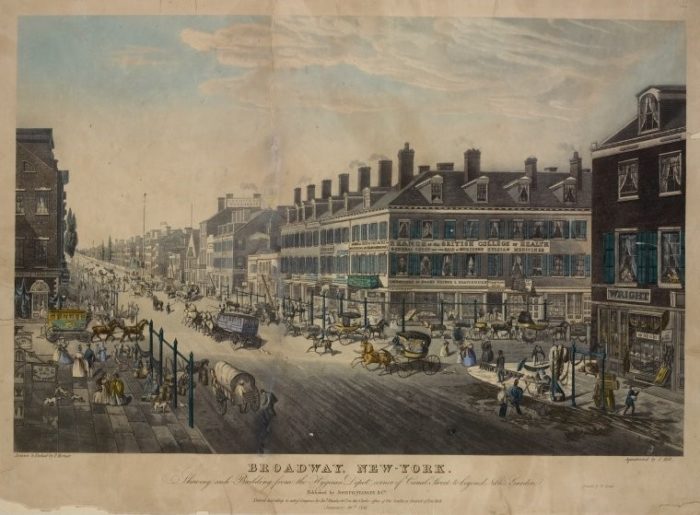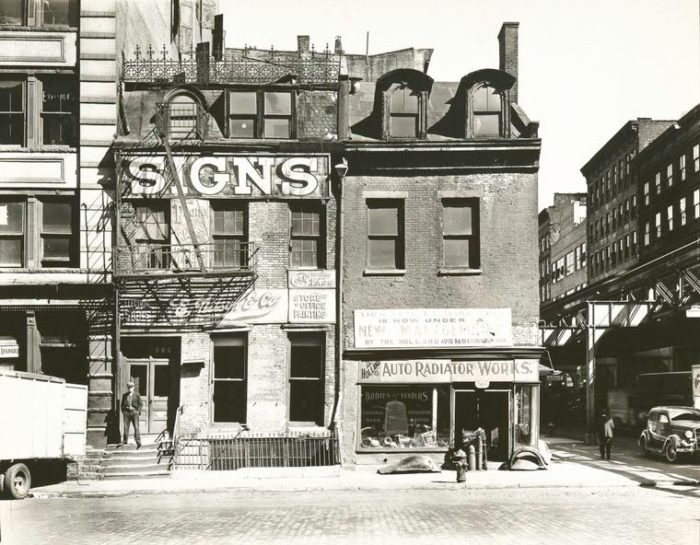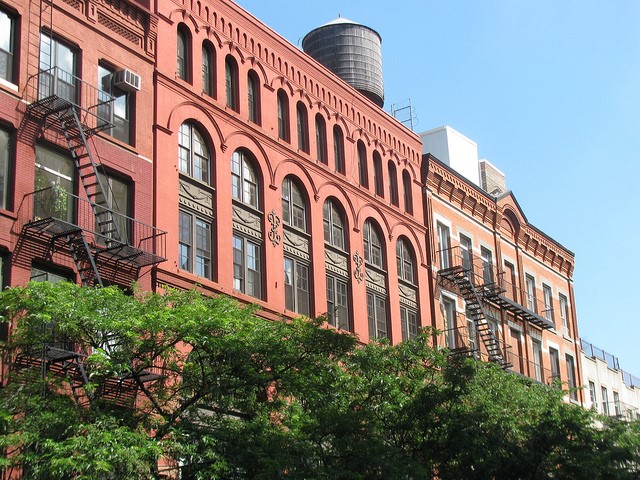The storied neighborhood now known as SoHo has had many incarnations in the last four centuries. From free Black settlement to early retail hub, from red light district to textile center, from “Hell’s Hundred Acres” to artists’ enclave — let’s take a brief look at the history of SoHo.
Bordered roughly by Houston Street to the north, Crosby Street to the east, Canal Street to the south and Sixth Avenue to the west, this area’s earliest notable use was as Manhattan’s first “free” Black settlement in the mid-1600s. African slaves here were owned by the Dutch West India Company and were responsible for clearing and building much of the New Amsterdam territory. By the 1640s, Dutch West India Company began granting a sort of half-freedom to the slaves who then created settlements, dubbed Land of the Blacks, from what is modern-day SoHo across Lower Manhattan toward the East River.
Natural geographical barriers, namely Collect Pond and the stream that ran from it to the Hudson River along today’s Canal Street, hemmed the urban development of the 18th Century to the south, and the SoHo area stood as a farmland throughout the period. As population growth and industry marched ever-onward, however, the pond and stream became a polluted cesspool and a threatening mosquito breeding ground, and both were filled and paved over by 1813.
Collect Pond circa 1796 (Image: New York Public Library)
This ushered an era of middle-class row houses and retail businesses into the area, including early outposts of New York institutions Tiffany & Co. and Lord & Taylor. Hastened by the advent of cast-iron architecture, building boomed and large hotels and stores blanketed Broadway, followed by a burgeoning theater and entertainment industry in the form of music halls and theaters. By the mid-19th Century, Broadway between Canal and Houston was the entertainment capital of the city, while the nearby streets supported a well-known red-light district.
The Broadway entertainment district circa 1836 (Image: New York Public Library)
This sordid trade, combined with a growing influx of manufacturers, soon pushed the area’s middle-class inhabitants into new residential enclaves opening uptown. What was then known as the 8th Ward lost 25 percent of its residential population in just five years between 1860 and 1865, the largest decline for any neighborhood below 14th Street. Large-scale manufacturers — metal and glass works, cabinet makers, and especially textile firms — filled the vacant lots left in the wake of residential flight and built larger warehouses and factories using cast-iron techniques to accommodate large machinery and sizeable workforces.
While the nature of businesses shifted, manufacturers, wholesalers, and warehouses were the primary occupants of the SoHo area for decades until after World War II. In the post-war period, industry moved further south or out to New Jersey and Brooklyn leaving vacant buildings behind. The area became known as Hell’s Hundred Acres as seedy sweatshops, parking garages and gas stations moved into unwanted commercial spaces. It wasn’t until the late 1960s that artists began to reclaim the area, drawn to its characteristic oversized loft spaces, high ceilings, and ample natural light, and of course, the cheap or free accommodations.
Northwest corner Broome Street and West Broadway circa 1935 (Image: New York Public Library)
The “SoHo” moniker was given to the neighborhood in 1963 when city planner Chester Rapkin used the term to denote “South of Houston” in a city planning report. The report was issued around the same time preservationists, civic leaders, and resident artists successfully fought off Robert Moses’ notorious Lower Manhattan Expressway plan that would’ve decimated SoHo and several other downtown neighborhoods with a roadway linking the Manhattan and Williamsburg Bridges to the Holland Tunnel.
After turning a blind eye to the hundreds of artists living illegally in SoHo buildings zoned for manufacturing, in 1971 the city began legalizing artists residing in joint live-work spaces as long as they were certified by the Artists’ Certification Committee. In 1986, all residents of SoHo and NoHo were granted a one-time approval, and to this day, it is technically illegal for residential units to lack a certified-artist occupant in the M1-MA and M1-MB zoning districts (SoHo and NoHo), although enforcement by boards and building owners has been spotty and infrequent.
West Broadway between Houston and Thompson streets (Image: edenpictures/Flickr)
In 1973, the New York City Landmarks Preservation Commission designated the SoHo-Cast Iron Historic District, protecting approximately 500 buildings in this historically important neighborhood. In 2010, the SoHo-Cast Iron Historic District Extension was created to protect an additional 100-plus buildings along the eastern and western borders of the original district.
Today, SoHo is an eclectic and beautiful neighborhood populated by iconic cast-iron and brick buildings on blocks that are alternately crowded and bustling or quiet and cobblestoned. It has become an alluring destination where prestigious global brands build must-visit flagship stores and discerning buyers scramble to obtain their own bit of New York City history.






